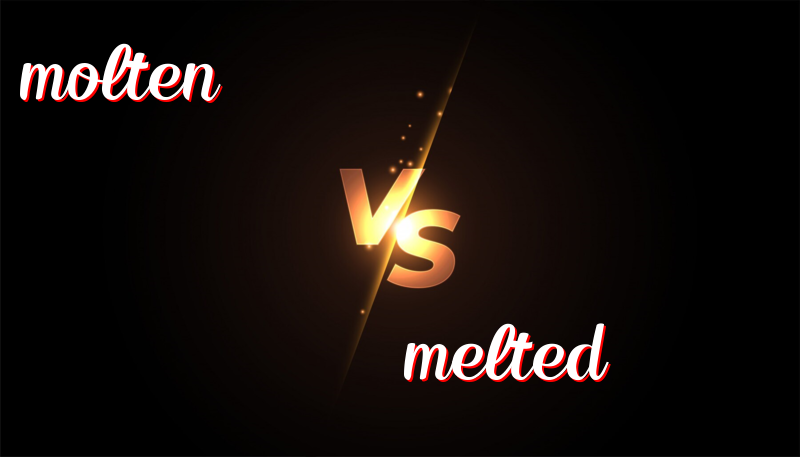Molten vs Melted: Know the Difference
The Difference Between Molten and Melted
“Molten” and “melted” are two words that describe something that has changed from a solid to a liquid because of heat. Here’s how you can tell the difference between them:
History:
“Molten” comes from an old English word, “meltan,” which means to melt. “Melted” also has its origins in the word “melt.”
How to use them:
– We use “molten” when we want to emphasize the process of melting and the state of being in a liquid form due to heat.
– We use “melted” to describe something that was once a solid and has changed to a liquid state.
Trick to Remember the Difference:
– Think of “molten” as the more intense word, indicating a high degree of heat and change.
Examples of “molten”:
1. The blacksmith poured the molten metal into the mold.
2. The volcano erupted, spewing molten lava down the mountainside.
3. The artist sculpted the molten glass into a beautiful vase.
4. Be careful around the molten metal; it can cause severe burns.
5. The intense heat had turned the rock into molten magma.
Examples of “melted”:
1. The ice cream melted quickly in the hot sun.
2. She left the chocolate on the dashboard, and it melted into a gooey mess.
3. The snowman slowly melted away as the day warmed up.
4. The candle was left near the window, and it melted unevenly.
5. The cheese on the sandwich had completely melted, making it gooey and delicious.
Summary:
In short, use “molten” for things that have melted due to high heat or intense energy, like metal and lava. Use “melted” when talking about something solid that has turned into a liquid, like ice cream or chocolate. Remember, “molten” is about the process and intensity, while “melted” is about the resulting state.

Leave a Reply
You must be logged in to post a comment.